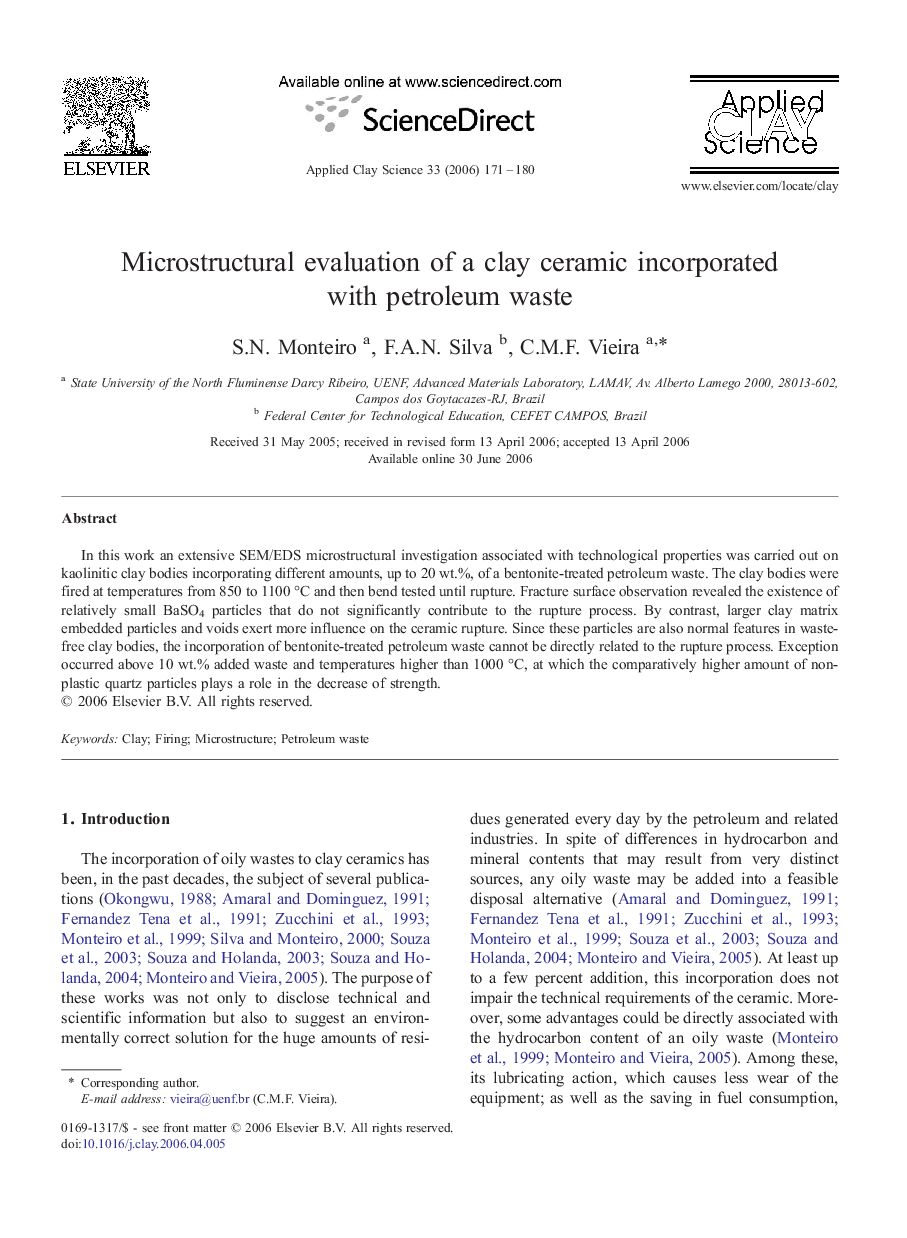| Article ID | Journal | Published Year | Pages | File Type |
|---|---|---|---|---|
| 1696519 | Applied Clay Science | 2006 | 10 Pages |
In this work an extensive SEM/EDS microstructural investigation associated with technological properties was carried out on kaolinitic clay bodies incorporating different amounts, up to 20 wt.%, of a bentonite-treated petroleum waste. The clay bodies were fired at temperatures from 850 to 1100 °C and then bend tested until rupture. Fracture surface observation revealed the existence of relatively small BaSO4 particles that do not significantly contribute to the rupture process. By contrast, larger clay matrix embedded particles and voids exert more influence on the ceramic rupture. Since these particles are also normal features in waste-free clay bodies, the incorporation of bentonite-treated petroleum waste cannot be directly related to the rupture process. Exception occurred above 10 wt.% added waste and temperatures higher than 1000 °C, at which the comparatively higher amount of non-plastic quartz particles plays a role in the decrease of strength.
